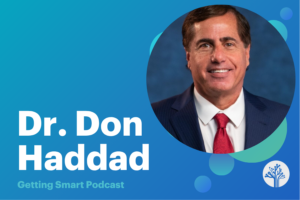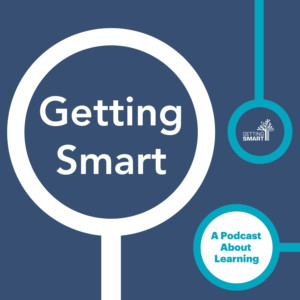Getting Smart Podcast | Using Pilot Programs as a Foundation for Innovation

This is the first in a three-part podcast series, on which Getting Smart is proud to have partnered with the Learning Assembly. In this series, we are exploring the most important lessons that the members of the Learning Assembly have learned in their work developing pilot programs for districts and schools looking to try new personalized learning and EdTech programs.
If you’re a superintendent or a principal, what do you do when you think a new program or EdTech tool could benefit your district or school’s students, but you just aren’t 100% sure?
This is a common challenge.
That’s why the members of the Learning Assembly, a national network of regional nonprofits that design programs to pilot personalized learning and EdTech with schools, have teamed up to share the lessons they’ve learned through their experiences piloting programs with a diverse range of schools and districts.
Pilots are often the perfect solution when trying to determine whether or not a new tool or program will be a good fit. If a pilot shows that an approach is effective, then it becomes a matter of scaling. Of course, piloting a new tool isn’t a magic bullet, and it can be a tricky process to design and execute well.
In this first episode in our three-part series, we spoke with Megan Smallidge (Professional Development Project Manager of LearnLaunch’s piloting initiative), Lynda-Lee Sheridan and Cathy Lyons (Principal and second-grade teacher, respectively, at Franklin D. Roosevelt K-8 School, which is part of Boston Public Schools and a participant in one of LearnLaunch’s pilots), about what a pilot is, and what it takes to lay the foundation for an initiative that can provide the data its organizers are looking for.
Among the valuable lessons they had to share, the following key themes emerged:
- “Prep work” (such as goal-setting) and professional development are crucial before starting a pilot.
- Success can take many different forms–it’s important to be adaptable and open-minded.
- For a pilot to be successful, teachers need to get engaged with the product or program. Creating an environment in which teachers are encouraged to participate through support networks is a good way to accomplish this.
For principals and superintendents looking to try out an innovative new practice, we think that pilots are one of the most reliable ways to make an informed decision based on the students you serve. More details on the above themes can be found in the podcast–be sure to keep an eye out for the next two entries in this series, when we will discuss what it takes to plan a pilot, and the key steps that are necessary for success in the process of implementing a pilot.
For more, see:
- The Learning Assembly’s Pilot Toolkit
- Pilots, Policy, and the Path to Competency-Based Education
- 5 Qualities of Prepared Leaders in a Project-Based World
Stay in-the-know with all things EdTech and innovations in learning by signing up to receive the weekly Smart Update. This post includes mentions of a Getting Smart partner. For a full list of partners, affiliate organizations and all other disclosures, please see our Partner page.








0 Comments
Leave a Comment
Your email address will not be published. All fields are required.